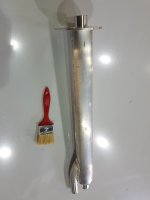So I did a bit more digging into the Lunas eGO as well as the E2 units.
And again, HRV units have their place, but you have to decide whether or not it is justified for your use case.
For those interested in these... there are a couple of items Id suggest you look into further
There doesnt look to be sufficient data for both the E2 and the eGO, so data looks to overlap... YMMV
But extreme cold operation and noise are two concerns of mine, besides what Ive already expressed in the thread so far.
For extreme cold... this seems like a legit issue. 35% ? Thats awfully low.
Which seems contrary to this claim with regards to frosting, claiming testing and operation down to -32 without "active prost protection"
The Lunos e² decentralized high efficiency heat exchange whole house ventilation system remains a breakthrough in building technology - combining high performance with simplicity of installation and operation. Introduced in 2012 to the US market by 475, the system has proved its effectiveness...

475.supply
And finally, specific to the eGO, the noise issue. Looks like up to 38dB, which would definitely bother me....
especially when you factor in the oscillation. The fans cycle back and forth.... constantly






